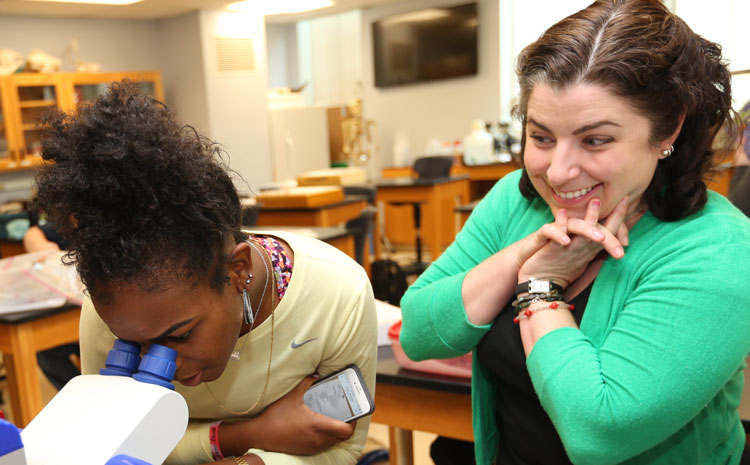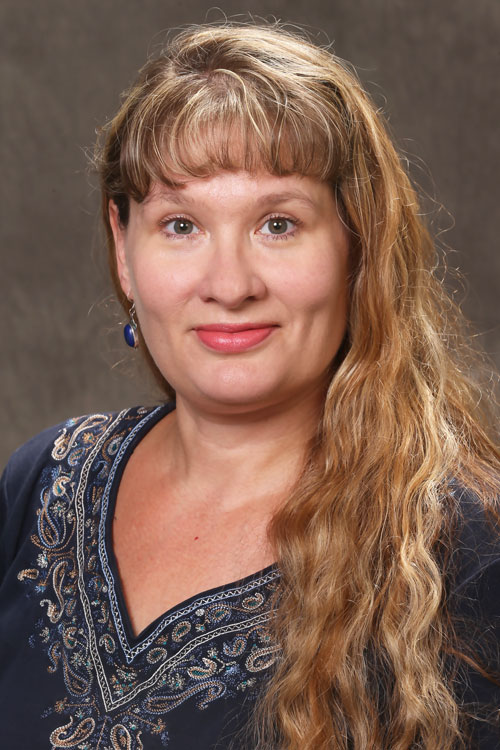
What’s Darwinism Got to Do with It?
Mar 29, 2019
When you think about Charles Darwin, what comes to mind? His theories about evolution, of course. His book On the Origin of the Species. Maybe even his five-year voyage on the HMS Beagle.
But perhaps you aren’t as familiar with how people have used Darwin’s ideas about biological evolution to justify sexism, racism, classism, eugenics and more. Xavier students explored this phenomenon in an interdisciplinary course last fall called The Rhetoric of Darwinism, offered as part of the University Scholars Program.
“This class looked at the connection between science and argument—how have people throughout history talked about evolution, and how have they used Darwin’s ideas for good or bad?” says Associate Professor of Biology Annie Ray, PhD, who co-taught the course with Assistant Professor of English Renea Frey, PhD.
“So many ideologies and social practices have their roots in Darwin’s understanding of evolutionary biology, including everything from racial discrimination to forced sterilization to genetic engineering.”
Going down the rabbit hole
For more than a year before the class began, Frey and Ray read voraciously on the topic and designed the curriculum together.
“We realized early on that we were going down a rabbit hole, and it was deep,” says Frey. “You could teach this topic for five years and never get through it. The first half of the course, Annie would teach about the biological aspects of a specific topic, such as the so-called evidence for scientific racism. Then I would teach on the more rhetorical arguments, such as where can we see bias in the scientific arguments being made? This led to some eye-opening discussions, but the students really rose to the challenge.”
A total of 28 students took the course, representing a variety of majors, from biology and environmental science to psychology, theology, finance and art. One of them was Rachel Neff, a senior biology major.
“In the scientific discipline of evolutionary biology, Charles Darwin is held up as a god-like figure—he is known as the ‘Father of Evolution,’ after all,” Neff says. “I wanted to learn more about the man, the myth and the legend known as Charles Darwin. His ideas about natural selection and survival of the fittest were distorted into pseudoscientific, harmful ideologies. Even the Holocaust had foundations in ideas that certain people were ‘more evolved’ than others. Learning all of this was both fascinating and somewhat shocking to me. Everyone in class was surprised by something they learned.”
Opening up dialogue
Frey (pictured right) and Ray devoted the last half of the semester to class discussions on contemporary topics selected by the students themselves. This came as a welcome surprise to junior Noah Regnier, an honors criminal justice and computer science double major.
“I wasn’t sure I was going to like this course or that it would be relevant to me,” he says. “But it ended up being my favorite one last fall. My number one area of interest is criminology, and one of the first things we talked about is why crime exists, and is there a genetic component. I did my final project about scientific research related to the link between substance addiction and genetics. I got a lot more out of this class than I expected to.”
Ray and Frey are eager to teach the course again.
“Exploring the theme of Darwinism through such different perspectives as biology and rhetoric shows students that the arts and sciences are interrelated,” Frey says. “This class enriched our students’ understanding of that concept, which will benefit them regardless of what field they choose.”
Ray, the biologist, agrees.
“A lot of my biology students take a humanities class and think, ‘This doesn’t apply to me,’” she says. “This class gave students the chance to see Renea and me model a relationship of dialogue. I hope that through this experience, students see that you can have a productive conversation with people from different perspectives and learn a lot from them.”
Feature Image: Ann Ray works with a student in her lab class.